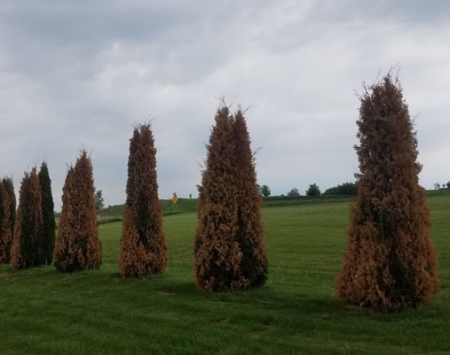Click below to listen to my 2 min. Garden Bite radio show: Saving your woodies over Winter
Audio PlayerBefore you start giggling… Tom, I know you are…. listen up, this is good advice! ? A perennial topic this time of your is protecting your woodies. Here’s the explanation! Woody plants are plants that have hard stems (thus the term, “woody“) and that have buds that survive above ground in winter. The best-known examples are trees and shrubs (bushes). These are commonly broken down further into the deciduous and evergreen categories. The opposite of “woody plants” is “herbaceous” plants
Winter sun, wind, temperature fluctuations, snow and ice can make for a deadly combo for your trees and shrubs. Sunscald happens on bright winter days when the sun heats up the cambium layer on the south and/or west side of your trees. The cambium layer moves water and nutrients through the tree, if it heats up, it starts to move and then freezes when the sun goes down and can kill your tree. Great information can be found at Missouri Botancial Garden.


A white tree wrap or guard can help prevent damage to smaller (younger) and/or thin barked trees. Wrap them from the soil to the first set of branches.
Don’t fertilize now. But DO water your trees, shrubs, perennials up until the ground freezes sometime in December. Especially newly planted trees and because we’re experiencing drought this year.
Evergreens commonly suffer from winter damage. Winter Injury [University of Illinois Ext.] Another great site on tree/shrub injury of a variety of issues is from the University of MN Ext.
The most susceptible evergreens are Yews, Arborvitae and Hemlocks. The best protection is to wrap them in burlap, although not attractive, it can really be worth it.


